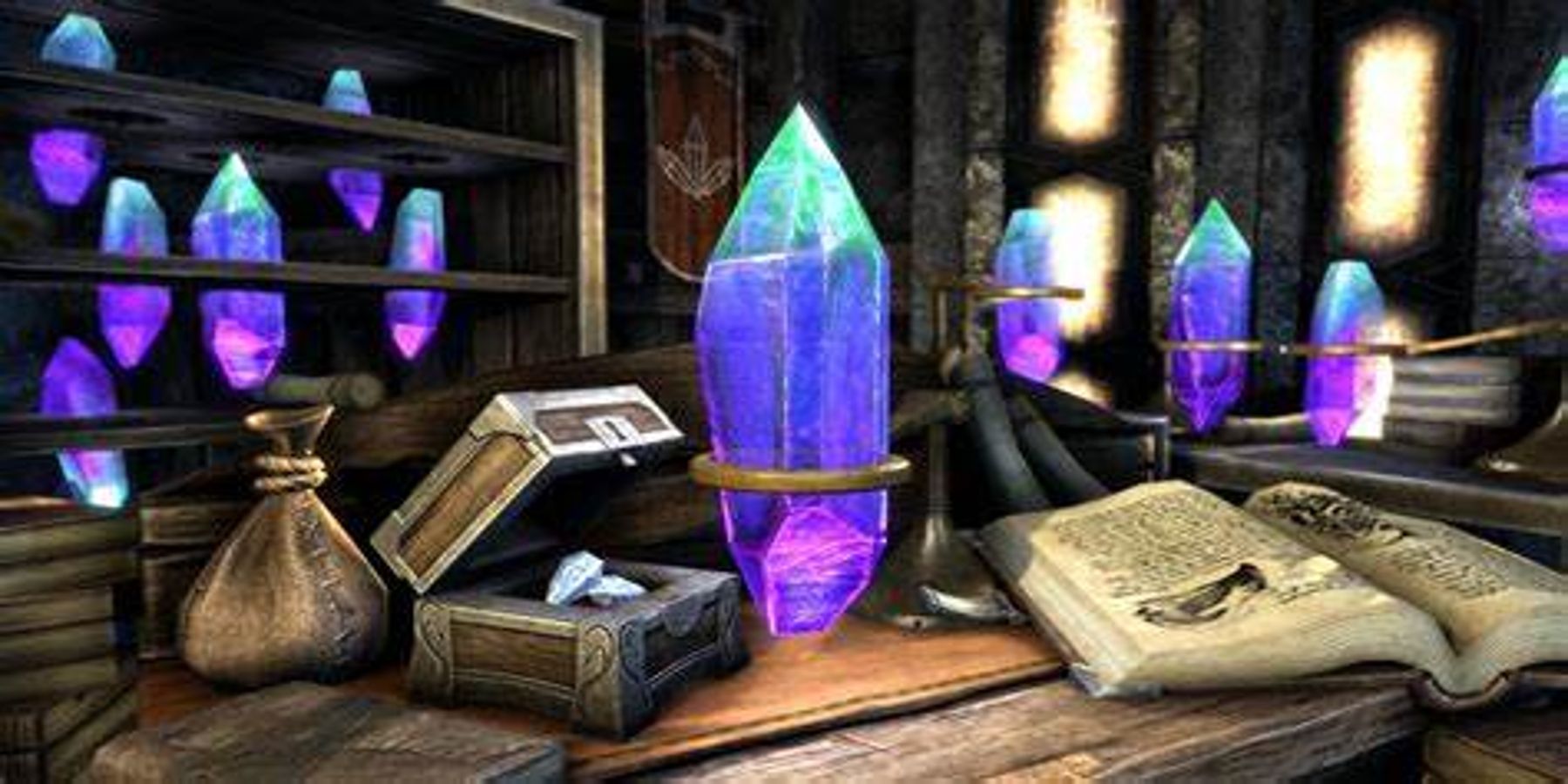Soul gems were introduced early on in the Elder Scrolls franchise and have become a material of vital importance to gameplay. From creating enchanted gear to resurrecting fallen teammates, naturally occurring magical gemstones are now present in every single project that has been released by Bethesda and will be included in The Elder Scrolls 6. The gems can be varying sizes and rarity, from soul gem fragments to Azura's Star, an ancient Daedric artifact said to hold souls of any size. Most players are familiar with the brightly lit purple gems found in dungeons and sold by merchants.
While soul gems are a pretty common find in Skyrim, they come with an intriguing history that goes all the way back to the beginnings of Tamriel history. Some players may be unaware that soul gems have been involved in experiments conducted by both mages and necromancers, and have had near-catastrophic effects when misused. While the lore behind soul gems was touched on only briefly during the events of Skyrim, hopefully The Elder Scrolls 6 will delve deeper into the moral implications of transforming souls into a power source for magic and enchantment.
Soul Gems in the First and Second Eras of Tamriel History
The history of soul gems can be traced back to the Daedric prince Molag Bal, who is rumored to have contributed part of his power to create the gems as they appear in Tamriel. Black soul gems - used to trap even the most unwilling humanoid creatures - are especially precious to Molag Bal, as his ultimate goal is to bring the souls of all mortals under his control. Soul trapping involving soul gems dates back to the First Era, when the early Mages Guild began to experiment with soul trapping spells, although they were quite erroneous.
In the Second Era, the Dragonborn Mannimarco was a necromancer with a craving for power and interest in soul gems. Mannimarco and his follower Vastarie conspired to steal a black soul gem from Coldharbour, a realm of Oblivion owned by Molag Bal. After Vasarie successfully brought a black soul gem back to Nirn, Mannimarco was able to make a deal with Molag Bal for power, ultimately triggering the Planemeld that allowed the Daedric prince to launch an all-out invasion as seen in the events of The Elder Scrolls: Oblivion. Ultimately, Mannimarco was killed, but the necromancy he birthed lived on.
Soul Gems in the Third and Fourth Eras, Up to Skyrim
By the Third Era, black soul gems were incredibly difficult to find, and they were considered taboo given their usage in the Planemeld and their capacity for trapping and manipulating the souls of humanoid beings. The Mages Guild and other magical organizations would only use white soul gems - with the power to trap animals and small beings - as part of their work. Behind the scenes, Necromancers continuing the mission of the Order of the Black Worm continued to experiment with black soul gems.
The Last Dragonborn comes into contact with the effects that black soul gems have when interacting with vampires in the Dawnguard DLC. In the vampire storyline, the player can a plane of Oblivion called the Soul Cairn, one of the areas vampires go after death. The Last Dragonborn can use black soul gems, and even travel into a black soul gem that has been turned into a refuge for Winterhold mage Malyn Varen. Black soul gems are actually more common in Skyrim when compared to previous games. There are also ways for the Dragonborn to create black soul gems, hearkening back to the necromancy of earlier eras.
The Elder Scrolls 6 is currently in development.






